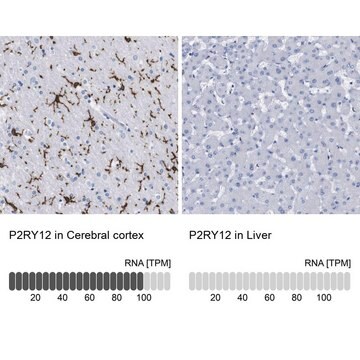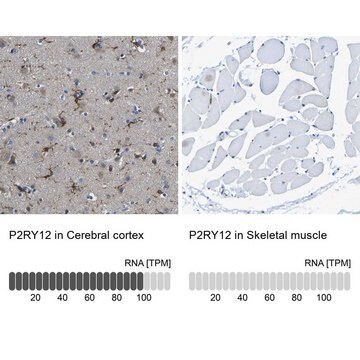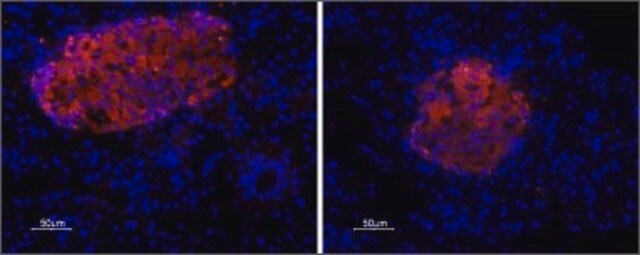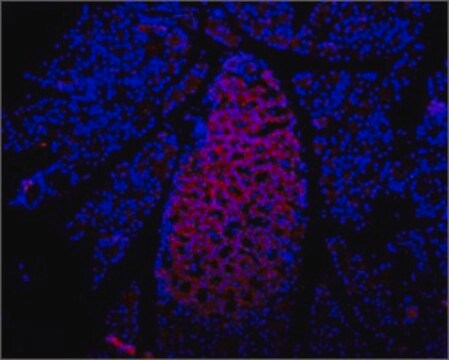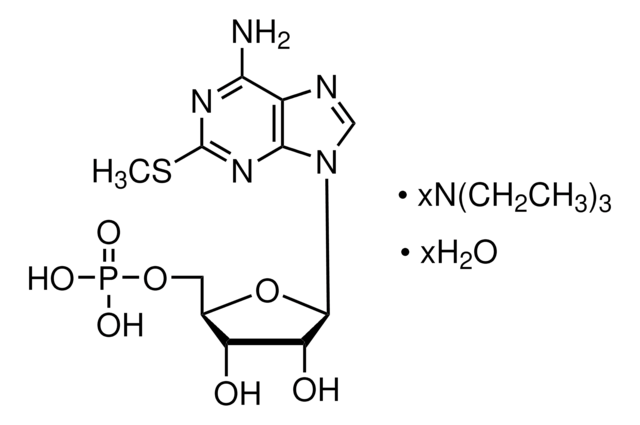P4871
Anti-Purinergic Receptor P2Y12 antibody produced in rabbit
affinity isolated antibody, lyophilized powder
Sinónimos:
Anti-ADPG-R, Anti-BDPLT8, Anti-HORK3, Anti-P2T(AC), Anti-P2Y(12)R, Anti-P2Y(AC), Anti-P2Y(ADP), Anti-P2Y(cyc), Anti-P2Y12
About This Item
Productos recomendados
origen biológico
rabbit
Nivel de calidad
conjugado
unconjugated
forma del anticuerpo
affinity isolated antibody
tipo de anticuerpo
primary antibodies
clon
polyclonal
formulario
lyophilized powder
reactividad de especies
human, mouse, rat
técnicas
immunohistochemistry: suitable using mouse brain sections
western blot: 1:200 using rat brain membranes or human platelets
Nº de acceso UniProt
temp. de almacenamiento
−20°C
modificación del objetivo postraduccional
unmodified
Información sobre el gen
human ... P2RY12(64805)
mouse ... P2ry12(70839)
rat ... P2ry12(64803)
Descripción general
Inmunógeno
Aplicación
Acciones bioquímicas o fisiológicas
Forma física
Cláusula de descargo de responsabilidad
Not finding the right product?
Try our Herramienta de selección de productos.
Certificados de análisis (COA)
Busque Certificados de análisis (COA) introduciendo el número de lote del producto. Los números de lote se encuentran en la etiqueta del producto después de las palabras «Lot» o «Batch»
¿Ya tiene este producto?
Encuentre la documentación para los productos que ha comprado recientemente en la Biblioteca de documentos.
Nuestro equipo de científicos tiene experiencia en todas las áreas de investigación: Ciencias de la vida, Ciencia de los materiales, Síntesis química, Cromatografía, Analítica y muchas otras.
Póngase en contacto con el Servicio técnico